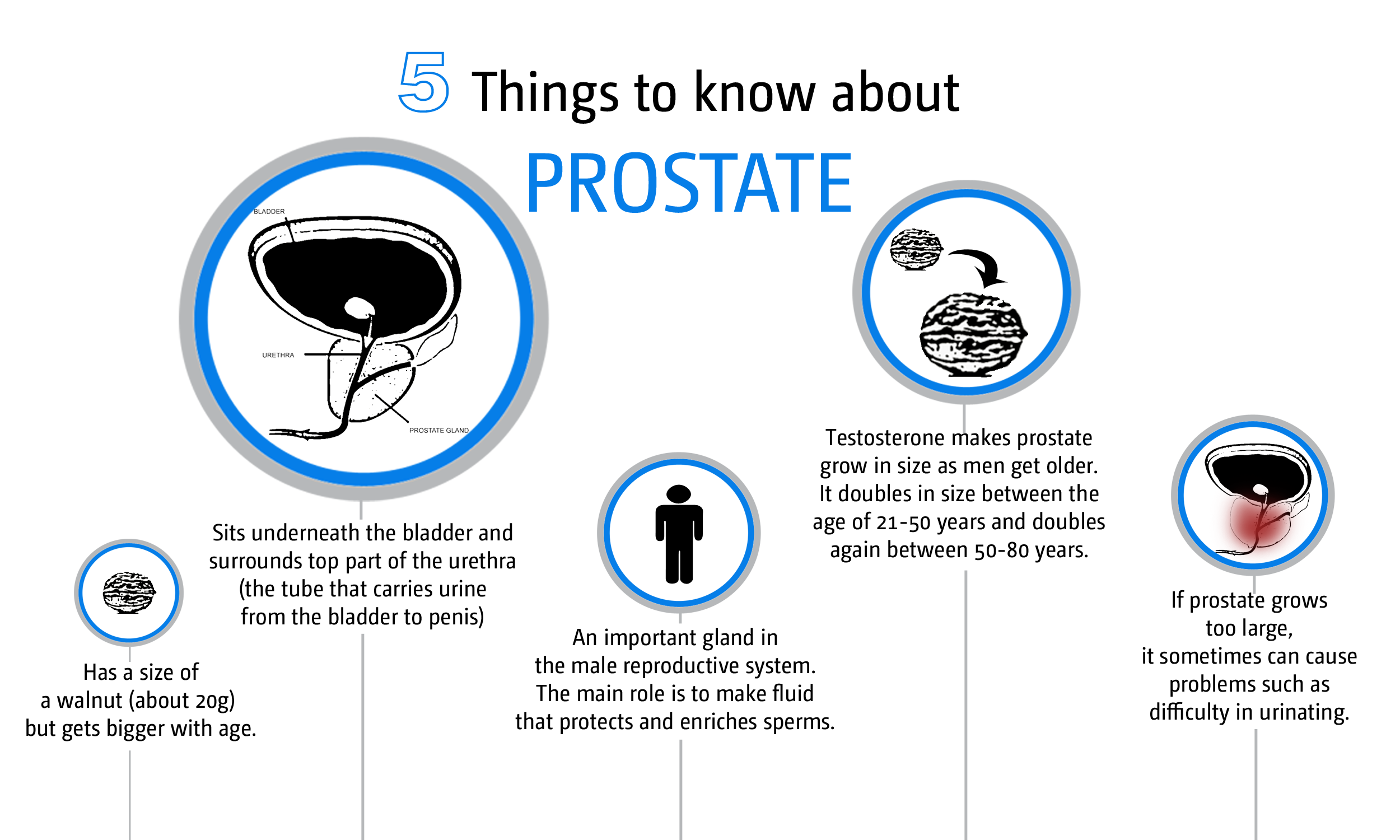prostate gland
i
How Big is Prostate?
Every man has a different prostate size. By the age of 20, an average man has a prostate size of a walnut. The size of the prostate is fuelled by male sex hormones and it constantly increases to reach a size of a lemon (Average weight 40g) in the 70s. It is approximately 4 cm wide and 3 cm thick.
ii
Where is Prostate located?
The prostate surrounds the base (or neck) of the bladder. The seminal vesicles are located posterior to the prostate. The prostate consists of approximately 70% glandular tissue and 30% fibromuscular stroma. The urinary tract exits from the bladder and traverses the prostate gland before exiting to the penile urinary tract. Due to this location, enlargement of the prostate is associated with squeezing of the urinary tract and hence symptoms such as dribbling, urinary hesitancy.
iii
What does Prostate do?
The main function of the prostate is to produce the fluid rich in proteins and minerals that maintain and nourish sperm.
The muscle fibres of prostate gland control the flow of urine. The fibres are wrapped around the urethra and are under involuntary nervous system control. These fibres contract to slow and stop the flow of urine.
iv
The relationship between Age and Prostate size?
The male sex hormone testosterone fuels prostate gland. Testosterone derivative dihydrotestosterone makes prostate grow in size as men get older.
It doubles in size between the age of 21-50 years and then doubles again between 50-80 years.
v
Enlarged Prostate and Symptoms?
Enlarged prostate has been a considerable health problem in ageing men for its associated symptoms and complications. Although not a life-threatening condition, It has a negative impact on the quality of life. To learn more about symptoms associated with prostate enlargement click Urinary Symptoms Related to Prostatic Enlargement







